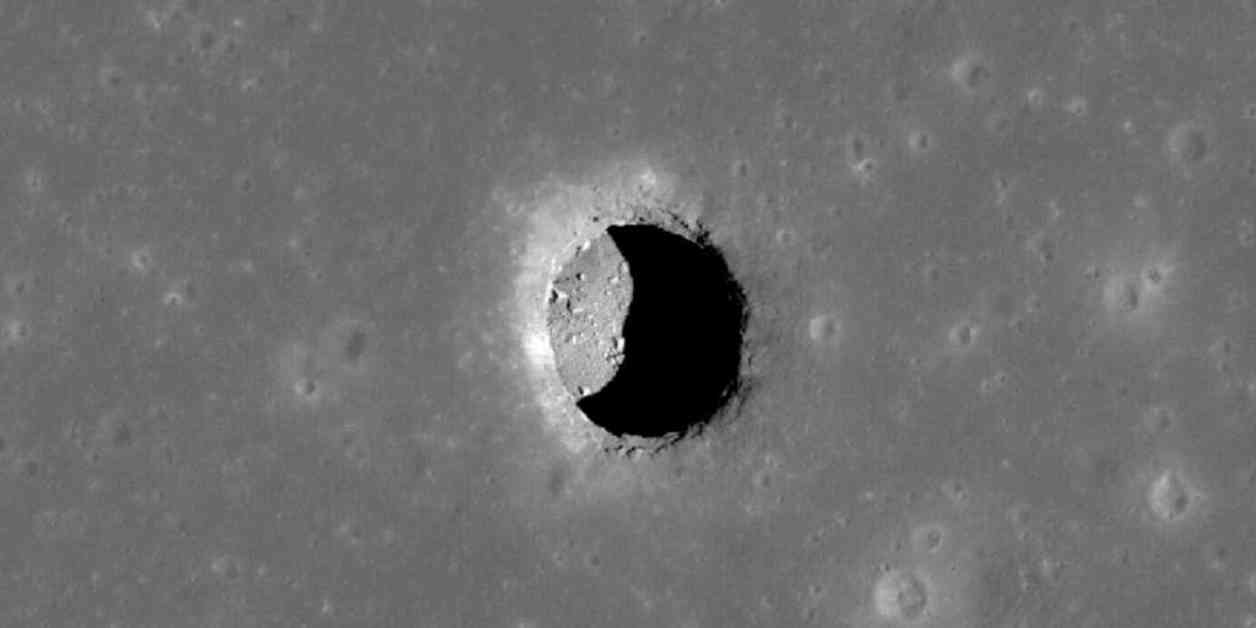An Italian-led team of scientists recently confirmed the existence of a significant cave on the moon, located not far from where Neil Armstrong and Buzz Aldrin landed 55 years ago. This cave, situated at the Sea of Tranquility just 250 miles from Apollo 11’s landing site, has sparked excitement among researchers as it potentially offers a shelter for future astronauts. The discovery of this cave raises the possibility of establishing a permanent base on the lunar surface to support human exploration.
The Mare Tranquillitatis pit crater, where the cave was found, is approximately 330 feet deep and was created by the collapse of a lava tube, similar to over 200 other pits discovered on the moon. By analyzing radar images captured by NASA’s Lunar Reconnaissance Orbiter, researchers were able to identify an elliptical skylight with vertical walls and a sloping pit floor, indicating the presence of an underground cavity. This finding suggests that the Mare Tranquillitatis pit leads to an accessible cave conduit beneath the Moon’s surface, making it a promising site for a lunar base.
The radar data revealed that the underground cavity is at least 130 feet wide and extends for tens of yards, potentially offering a safe haven for astronauts from the harsh lunar environment. These caves could serve as natural shelters, protecting astronauts from cosmic rays, solar radiation, and micrometeorite strikes. While building habitats from scratch would be challenging, utilizing existing lunar caves could expedite the process of establishing a sustainable habitat for human exploration.
The discovery of this cave has shed light on the potential for lunar caves to support long-term human exploration on the moon. The presence of hundreds of pits and thousands of lava tubes on the moon indicates that there are numerous opportunities for creating safe habitats for astronauts. Additionally, the moon’s South Pole, where frozen water is believed to be present in permanently shadowed craters, could offer valuable resources for sustaining human life on the lunar surface.
As space agencies, including NASA, plan to send astronauts back to the moon, the identification of lunar caves as potential shelter sites marks a significant milestone in advancing human exploration beyond Earth. Establishing a lunar habitat inside a cave could offer astronauts a less hostile environment compared to the lunar surface, providing more stable ambient temperatures and increased protection from space radiation and micrometeorite impacts.
In conclusion, the discovery of the cave on the moon represents a crucial step towards establishing a sustainable human presence on the lunar surface. By leveraging natural formations such as caves, researchers and space agencies can accelerate the development of lunar habitats and support long-term human exploration of the moon. This finding opens up new possibilities for future missions to the moon and beyond, paving the way for a new era of space exploration and discovery.




